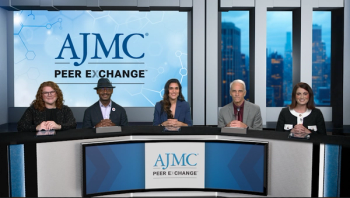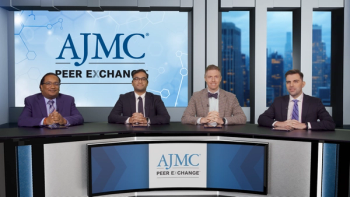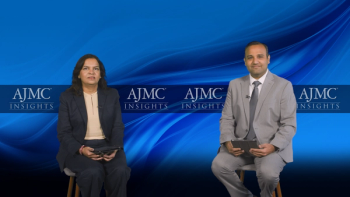
US COVID-19 Survival Rates Were Affected by Caseload Strain Across Hospitals
During the Delta wave of COVID-19, higher caseload strain negatively impacted patient survival rates across US hospitals, regardless of their size or resources.
Caseload strain still significantly impacted survival in hospitalized patients with
The researchers explained that US hospitals often cannot routinely match staffing to caseload, resulting in relative caseload strain. Therefore, hospitals are vulnerable to local, regional, and nationwide disasters, as demonstrated during the COVID-19 pandemic. Consequently, the researchers noted that the COVID-19 pandemic demonstrated whether the quality of care at certain hospital types was more resilient to caseload strain.
Resources, care provisions, and infrastructure
To do so, the researchers used the PINC AI Healthcare Database, which covers about 25% of all US hospitalizations. Using this database, they identified patients aged 18 years or older admitted to US hospitals that continuously reported data between July 1 and November 31, 2021, with discharge dispositions through February 14, 2022. The researchers identified patients with COVID-19 using the International Classification of Diseases, 10th Revision diagnosis codes.
Only hospitals with intensive care units (ICUs) were analyzed. Based on their resources and capabilities, the researchers classified the hospitals into 4 categories: extracorporeal membrane oxygenation (ECMO)–capable hospitals, non-ECMO multi-ICU hospitals, and large and small single-ICU hospitals. They classified single-ICU hospitals as large or small by using a cutoff of 200 beds.
The primary exposure variable was the COVID-19 surge index, or the severity-weighted COVID-19 inpatient caseload relative to the hospital bed capacity. The researchers also used hierarchal models to evaluate the impact of the log-transformed surge index on the marginally adjusted probability of in-hospital mortality or discharge to hospice.
Of the PINC AI Healthcare Database's 814 hospitals, 620 (76.2%) had at least 1 ICU. The researchers identified 216 multi-ICU, 208 ECMO-capable, 160 small single-ICU, and 36 large single-ICU hospitals. Of the 2,687,526 treated at these hospitals during the Delta wave, 223,380 patients with COVID-19 met the inclusion criteria. Of these patients, 51% (n = 113,853) were male and 38.9% (n = 86,904) were older than 65 years.
Throughout the study period, 50,752 (23%) patients were admitted to the ICU and 27,474 (12%) received mechanical ventilation. Mechanical ventilation occurred in 10,850 (4.9%) patients on admission (day 0-1), 5.7% of which were hospitalized in ECMO-capable centers, 4.9% in large single-ICUs, 4.3% in multi-ICUs, and 2.7% in small single-ICUs.
Additionally, the researchers observed variations in caseload surges across hospitals, with higher distributions during August (range, 0.12-74.6) and September (range, 0.16-50.4). More specifically, 515 hospitals surged above the 50th percentile of the COVID-19 surge index, 190 above the 90th percentile, and 21 above the 99th percentile at least once during the Delta wave. In particular, the researchers found slightly higher distributions for multi-ICU and small single-ICU hospitals.
Of the study population, 34,274 (15.3%) died or were discharged to hospice. The researchers determined the adjusted mortality probability among patients with COVID-19 to be 5.51% (95% CI, 4.53-6.50) per unit increase in the log-transformed surge index. Also, about 7375 (21.5%; 95% CI, 5936-8813) of the COVID-19 deaths were potentially attributable to hospital caseload surges. They noted that the adjusted marginal mortality risks did not differ by hospital type (P = .32).
Similarly, the log-transformed surge index remained associated with higher mortality risks when restricting the analysis to patients requiring mechanical ventilation within the first 2 days of admission (8.48%; 95% CI, 3.61-13.35; P = 0.75) or with acute respiratory failure diagnosis at admission (6.24%; 95% CI, 5.12-7.36; P = 0.94). Lastly, these effects stayed consistent when excluding patients transferred from other acute care facilities (5.45%; 95% CI, 4.47-6.43; P = .25).
The researchers acknowledged their limitations, including the administrative study data; this limited their ability to perform granular assessments of acute illness severity. Additionally, they noted that the 4 hospital type classifications were arbitrary. However, the researchers expressed confidence in their findings, suggesting ways to build upon them.
“We encourage future studies that examine whether the risks for high pandemic caseloads across hospital types identified in our study extend to patients with non-COVID-19 conditions during the pandemic and non-pandemic times,” the authors concluded.
References
- Neupane M, Warner S, Mancera A, et al. Association between hospital type and resilience during COVID-19 caseload stress. Ann Intern Med. doi:10.7326/M24-0869
- Horwitz JR. Making profits and providing care: comparing nonprofit, for-profit, and government hospitals. Health Aff (Millwood). 2005;24(3):790-801. doi:10.1377/hlthaff.24.3.790
Newsletter
Stay ahead of policy, cost, and value—subscribe to AJMC for expert insights at the intersection of clinical care and health economics.






































